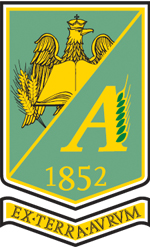Published in Scientific Papers. Series A. Agronomy, Vol. LXV, Issue 1
Written by Nicolaie IONESCU, Oana Daniela BADEA, Diana Maria POPESCU, Mariana Cristina NICOLAE
Recent studies have shown that the analysis of morphological traits in soybeans could provide new directions in the breeding process. Having a rich genetic diversity, the plant manifest itself in close connection with the concrete conditions in the crop environment. In the present study, two early soybean varieties were compared: Cristina TD and Onix, which are recommended by their performance in farm conditions. In both varieties, some new directions have been found, these being recently improved, namely through improved morphological characters. In the comparison between the two varieties, the plants had a height of 69 cm in Cristina TD and 65 cm in Onix. In the same order the wieght of the average plant was 24 g to 27 g, with a number of about 4 branches. The number of pods on a plant was 31 (Cristina TD) to 40 (Onix), weighing 12 g and 15 g. The number of beans on an average plant was 67 to 85, weighing 6.9 g at 8.5 g, the number of grains in a pod was approximately equal to 2.13-2.15. the grain had the length in favor of the Cristina TD variety, 7.1 mm to 6.7 mm for Onix, and the grain thickness ranged between 5.3 and 5.5 mm. The mass of one thousand grains exceeded 100 g in Cristina TD (104.5 g) and was below 100 g in Onix (98.4 g). The number of grains and their weight were positively correlated with the other characters in both varieties, while the mass of one thousand grains depended more on the weight of the grains and their thickness in the Cristina TD variety. The study of the morphological characters of the two new soybeans varieties demonstrated a good adaptability in the conditions of the white luvicsoil from the south of the territory.
[Read full article] [Citation]




